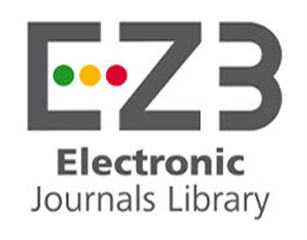PEDAGOGICAL EMPOWERMENT AS A MODEL OF HARMONIZATION OF PSYCHO-CULTURAL COMPLEXES “PUER” ARCHITECTURE CREATION OF THE PRIZE OF STRATEGY FOR SUSTAINABLE DEVELOPMENT
DOI:
https://doi.org/10.32689/2617-2224-2019-18-3-501-509Keywords:
empowerment-pedagogy, archetype, Puer, Sustainable Development ProgramtAbstract
The article attempts to clarify the specifics of practical implementation of empowerment-pedagogy in order to harmonize the psycho-cultural components of the archetype “puer” through the prism of the strategy of sustainable development, adopted in September 2015 by the decision of the General Assembly of the United Nations. Among the main provisions, it is indicated that the creation of a new educational paradigm is crucial for realizing the potential of the future, which will contribute to the formation of a responsible person capable of making the world safe and comfortable.
The acrticle established that the change in the paradigm of social consciousness caused the necessity of transforming the education system, since the future potential is formed in the process of formation of the child’s personality. There is no doubt that the formation of sustainable development requires updating of existing pedagogical models, filling them with new content, aimed at forming the system of views, habits, lifestyle that corresponds to modern tendencies in the students. It is revealed that at the present stage, an appeal to the pedagogy of the empowerment, which focuses on the direction of the younger generation to action, the achievement of personal progressive changes, is important.
In exploration it was observed that the content of this approach is empowerment, the acquisition of individual self-confidence, the disclosure deep potential mobilization of internal resources under conditions of trust partnerships in any dialogue. Since the same archetype “divine child” is a kind of matrix potential collective unconscious experience, it is a modern life stream adaptation that should be the basis for implementing the requirements of social and cultural life. The authors emphasize that today’s needs correspond most closely to such an approach, which contributes to the disclosure of the creative potential of the younger generation, the improvement of the effectiveness of learning, the acquisition of skills to competences that a modern, dynamic world requires.
References
Тоффлер Э. Третья волна / Элвин Тоффлер ; [науч. ред. П. С. Горе- лов]. — М. : АСТ, 2004. — 781 с.
Стратегія сталого розвитку Укра- їни на період до 2030 року [Елек- тронний ресурс]. — Режим доступу: http://www.ua.undp.org/content/dam/ukraine/docs/SDGreports/UNDP_Strategy_v06-optimized.pdf
Освіта в інтересах сталого роз- витку в Україні [Електронний ресурс]. — Режим доступу: http://ecoosvita.org.ua/storinka-knygy/osvita-dlya-stalogo-rozvytku
Коваленко Т. Дитина як об’єкт дер- жавного управління у сфері сана- торно-курортного забезпечення / Т. Коваленко // Держ. управління та місцеве самоврядування : зб. наук. пр. / голов. ред. С. М. Серьогін. — Дніпропетровськ : ДРІДУ НАДУ, 2014. — Вип. 2 (21). — С. 108–118.
Донченко О. Вступ до “Архетипо- вого менеджменту” / О. Донченко [Електронний ресурс] // Психоло- гія особистості. — 2012. — № 1. — С. 195–203. — Режим доступу: http://nbuv.gov.ua/UJRN/Po_2012_1_23
Фрейре П. Педагогіка пригнобле- них / Пауло Фрейре; [пер. з англ. О. Дем’янчука]. — К. : Юніверс, 2003. — 168 с.
Теличко Н. В. Теоретичні і методичні засади формування основ педагогіч- ної майстерності майбутніх учителів початкових класів : дис. ... д-ра пед. наук : спец. 13.00.04 — Теорія і методика професійної освіти / Му- качівський держ. ун-т. — Мукачево, 2014. — 559 с.
Юнг К. Об архетипах коллектив- ного бессознательного / К. Юнг // Архетип и символ. — М. : Reneisse, 1991. — С. 97–128.











